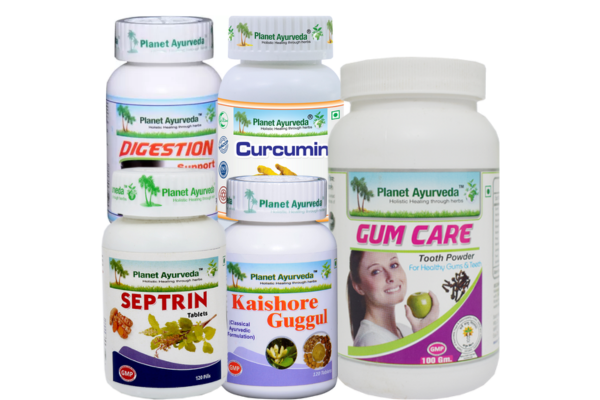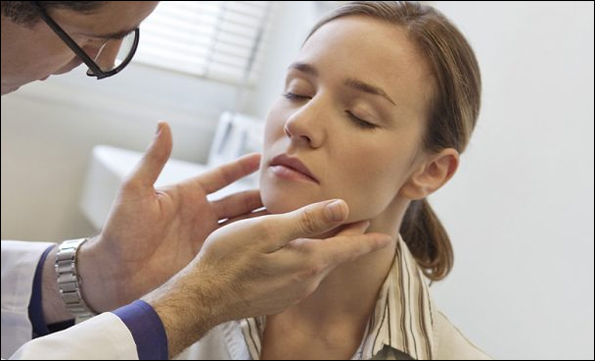How to Treat Sialadenitis & Sialadenosis Through Ayurveda
Abstract
The inflammation of salivary glands is known as sialadenitis. Mostly viral and bacterial cause is the reason behind acute form of sialadenitis. Whereas, sialadenosis is a non-inflammatory condition of salivary glands associated with hypertrophy and ductal atrophy. Common inflammation of the parotid gland is more common than that of sub mandibular gland. If the inflammation is not treated it may land into chronic conditions where there is more recurrence rate. In chronic conditions there is usually obstruction due to strictures. This obstructed gland leads to reduced salivary secretion and results in swelling. The exact prevalence of salivary gland inflammation is not known but sub mandibular involvement occurs in 10% of the population. There is no age or gender prediction as it occurs equally in both males and females but it is common in older ones above 50 years of age. History and clinical examination plays an important role in diagnosis of sialadenitis. In this article we will know about clinical features, causes, treatment of sialadenitis and sialadenosis and its management according to Ayurvedic classical texts.
INTRODUCTION
Sialadenitis is a medical condition when the salivary gland’s parenchyma get inflamed and swollen. The function of the salivary gland is to secrete salivary secretions which helps in digestion of food. It can be confused with sialodochitis inflammation of the ductal system of salivary glands. Sailadenitis usually involves a parotid gland which shows recurrent bacterial infection. During acute exacerbation, the parotid is enlarged, tender and pus can be expressed from its duct. There is a rapid onset of pain and swelling in particular glands. Sialadenosis is non neoplastic swelling of salivary glands, there is no inflammation. The swelling is non tender, bilateral and symmetric. Mostly it is associated with systemic disorders. Salivary gland plays a very important role in keeping our oral cavity healthy and protecting from any viral or bacterial infections. These both diseases (sialadenitis and sialadenosis) are common causes for submandibular gland infection.

ANATOMY OF SALIVARY GLANDS
Salivary glands are exocrine glands present in the oral cavity, their function is to secrete saliva which helps in swallowing and digestion of food.
Basically there are three types of salivary glands
- Parotid glands ( largest, maximum secretion)
- Sub mandibular glands
- Sublingual glands
Salivary glands consist of serous cells, myoepithelial cells and mucus cells. The function of salivary glands are as follows-
- Swallowing and mastication
- Electrolytes present protects enamel
- Enzymes help in digestion
- Proteins present protect from mouth infections.
- Neutralizes acid
- Antifungal property
- Contains calcium and phosphorus
- Protects from tooth decay
CAUSES
The main pathology behind sialadenitis is blockage of salivary glands. There are various causes but some of them are as follows-
Sialadenitis cause are
- Infectious cause (viral, bacterial, etc.)
- Obstructive cause ( stricture, foreign body)
- Inflammatory
- Drug induced ( intake of poly medicines)
- Auto immune
- Granulomatous
- Others ( smoking, alcohol, tobacco
Sialadenosis causes are-
- Metabolic disorders
- Nutritional disorders ( vitamin deficiency)
- Endocrine disorders
- Drug induced
- Auto immune
SYMPTOMS
The signs and symptoms for sialadenitis and sialadenosis are given below
- Swelling in cheek and neck
- Tenderness and pain on chewing ( in sialadenosis there is no tenderness
- Dry mouth (excessive)
- Fever and chills
- Pus discharge from mouth
- Painful lump on the face
- Redness on face
- Generalized weakness
- Hardened swelling and tissues
- Salivary stones
- Headache
- Malaise
RISK FACTORS
The risk factors for Sialadenitis are as following-
- Dehydration
- Liver disorders
- Kidney disorders
- HIV infection
- Malnutrition
- Infants during first weeks of life
- Unhygienic oral cavity
- Excessive spicy or sweet food
- Avoid coffee, tea, soda, etc.
- Immuno suppression
DIAGNOSIS
There are various methods of diagnosis of salivary gland inflammation, some of them are as following-
- According to Ayurveda darshan, prashan and sparshan ( Medical history and clinical examination)
- Examining face and neck area
- Complete blood count (CBC)
- Culture and sensitivity test
- Sialendoscopy
- Dental x rays
- Biopsy
- MRI and CT scans
MANAGEMENT
The line of treatment of sialadenitis and sialadenitis are as follows-
- Antibiotics (to prevents bacterial infection)
- Hydration
- Gland massage therapy
- NSAIDS ( Non steroids anti-inflammatory drugs)
- Hot compress
- Good oral hygiene
- Balanced diet, with plenty of fluids
AYURVEDIC POINT OF VIEW REGARDING SIALADENITIS & SIALADENOSIS
According to classical Ayurveda texts mukh roga (buccal cavity disorders) has explained in detail and counted 65 disorders in number. Acharya did not particularly mention salivary glands, as we know this disease is caused due to obstruction of salivary glands which leads to decreased secretion and causes dry mouth. So in Ayurveda text it can be correlated with “trishna” excessive thirst due to mouth dryness. It is tridosha disorder when there is predominance of vata and pitta dosha, which causes excessive thirst.
- In Ayurveda kawal and gandush (oil pulling and gargling) is done with medicated oils and decoction. Some medicinal drugs used are rare Acorus calamus, Aconitum heterophyllum, etc.
- Nimbu swaras (lemon juice)
- Ginger (Zingier officinalis) stimulate salivation
HERBAL REMEDIES FOR SIALADENITIS & SIALADENOSIS BY PLANET AYURVEDA
Planet Ayurveda is a well-known herbal product producer company, it has been spread throughout the world. All products are manufactured as described by Acharya’s in Ayurveda texts. Planet Ayurveda provides the best herbal remedies for different diseases. All products are natural, free from chemicals, yeast, etc. There is no substitute for herbs added in the preparations. The best herbal combination provided for sialadenitis & sialadenosis by Planet Ayurveda are as following-
Product List
- Curcumin capsules
- Septrin tablets
- Kaishore guggul
- Digestion support
- Gum care powder
HERBAL REMEDIES FOR SIALADENITIS & SIALADENOSIS
PRODUCT DESCRIPTION
1. Curcumin capsules
It is standardized capsule formulation prepared from extract of haridra (Curcuma longa), it has anti-inflammatory, anti-oxidant properties and balances tridosha (vata, pitta and kapha).These capsules help in wound healing, improve skin health and boosts the immune system. They correct body metabolism.
Dosage- One capsule twice daily with plain water after meals.
2. Septrin tablets
It is standardized tablet (vati) formulation prepared from extract of guggul (Commiphora mukul), haldi (Curcuma longa), tulsi (Ocimum sanctum). These tablets work on the ENT disorders, respiratory system and act as an immune booster. It balances all vitiated doshas (vata, pita and kapha dosha). It acts as anti-inflammatory and treats various skin diseases.
Dosage– Two tablets twice a day with lukewarm water after meals.
3. Kaishore guggul
Kaishor guggul is a vati preparation mentioned in Ayurveda classical texts. It mainly contains two ingredients triphala – Amalaki (Phyllanthus emblica), haritaki (Terminalia chebula) and bibhitaki (Terminalia billerica) and guggul (Comiphora mukul). These tablets help in blood circulation and act as a defense mechanism. It has anti- inflammatory, anti – bacterial properties and is used in metabolic disorders. It reduces pain and swelling.
Dosage– two tablets twice a day after meals.
4. Digestion support
It is standardized capsule formulation prepared from extract of different herbal medicines. It contains extract of triphala (amalaki- Emblica officinalis, haritaki- Terminalia chebula, bibhitaki- Terminalia belerica), sounf (Foeniculum vulgerae), pipali (Piper longum), etc. these ingredients are best digestives, and they maintain natural ph balance in stomach and helps in digestion. It maintains pitta imbalance dosha disorders and reduces ama (toxin) formation.
Dosage- One capsule twice daily with plain water after meals.
5. Gum care powder
This powder is standardized churna formulation prepared from extract of sonth (Zingier officinalis), mustak (Cyprus rotundas), haritaki (Terminalia chebula) and khadir (Acacia catechu). It plays a very important role in oral hygiene and makes oral mucosa healthy. This powder helps in curing various dental disorders such as dental caries, gingivitis, bleeding gums, etc.
Dosage- Take 3-6 grams of powder and do gargling or apply locally inside the oral cavity and rinse it off after 2-3 minutes with lukewarm water
CONCLUSION
Sialadenitis and sialadenosis is a salivary gland disorder which can be easily corrected with Ayurveda medications. You can follow above guidelines for salivary gland inflammation but for any kind of adversity in condition you must concern doctors. The team of Planet Ayurveda is available for your problems as they are well qualified and experienced.




